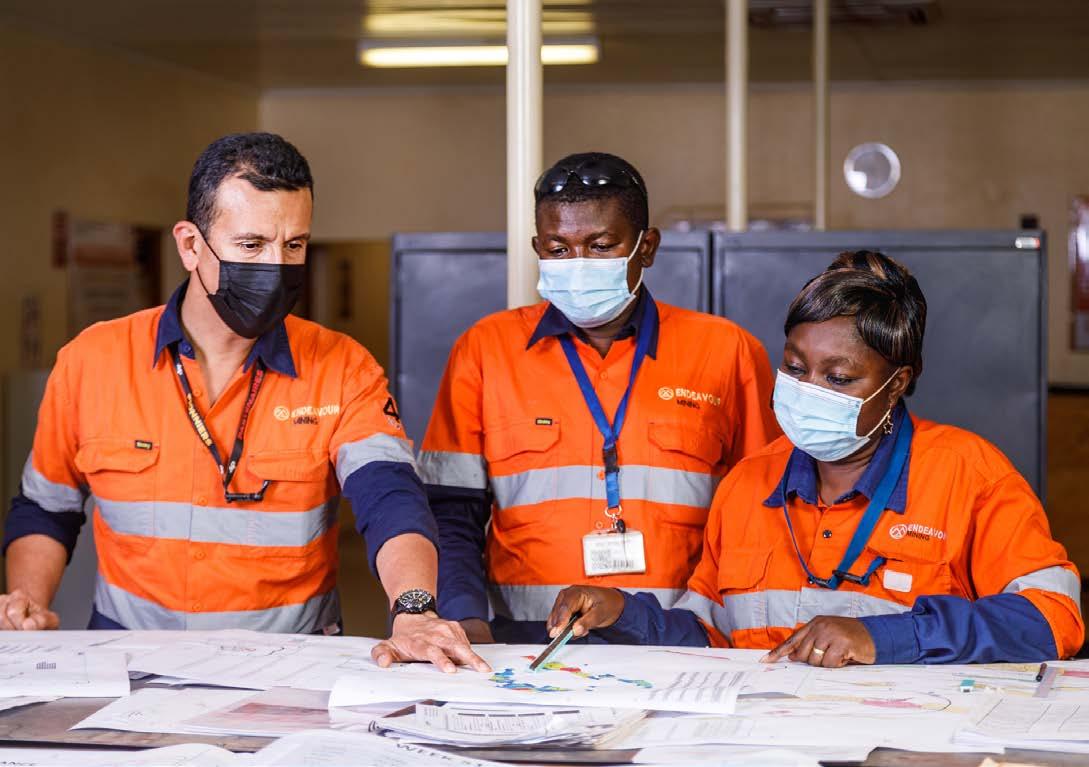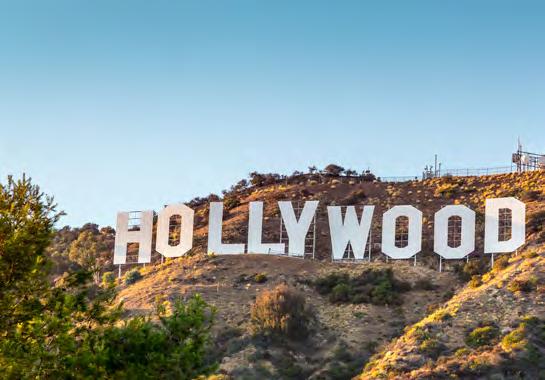WHERE TO INVEST FOR THE REST OF 2023
The outlook for markets as interest rates keep rising
CAPITAL PRESERVATION TRUSTS:
Why they’ve failed to work this year


The outlook for markets as interest rates keep rising
CAPITAL PRESERVATION TRUSTS:
Why they’ve failed to work this year

Lots of people look to invest to stay ahead of the rising cost of living. But which investments can help you do that?

Dunedin Income Growth seeks to deliver a rising income plus capital growth by identifying exceptional, sustainable UK companies with the potential for strong, growing dividends and a rising share price.
Unconstrained in our stock selection and highly focused on selecting companies with strong environmental and social practices, we believe that aiming for inflation-beating returns starts by seeking out market-leading companies. So to keep pace with life, why not think about investing with us?
Please remember, the value of shares and the income from them can go down as well as up and you may get back less than the amount invested.
Request a brochure: 0808 500 4000 dunedinincomegrowth.co.uk
• Nasdaq 100 benchmark is shuffling its weightings after AI tech stock surge

• Gresham House takeover highlights undervaluation of UK asset managers
• Why 888 and DraftKings have seen diverging share prices
• Why American Airlines shares have soared year-to-date

• Vanquis Banking shares have lost almost 20% in six weeks and could face FTSE 250 relegation
New: Starbucks / Heineken Updates: Rainbow Rare Earths 14 FEATURE
The UK shares which are overlooked plays on artificial intelligence
Which investments have done best this year and what should you buy now? 24 FEATURE Why capital preservation trusts have failed to live up to their name this year 27

Why fund managers stayed fans of a stock despite the falling share price
28
The golden strategy delivering big success for Endeavour Mining in West Africa

Discover how Castelnau plans to revive funerals group Dignity after its £281 million takeover
Hollywood strike has negative implications for multiple UK and US stocks
Why is my pension projected to be worth less than my contributions?
Why a mid-life financial MOT is absolutely vital in your 50s


havedonebestthisyearandwhat shouldyoubuynow?
The outlook asmarketsfor ratesinterest risingkeep
A ccordingtoanewstudybyUSbank GoldmanSachs,hedgefundscurrently havethelowestweightingtotheUS stockmarketinadecadeandthe highestweightingtoEuropeanstocksinstead. Consideringhedgefundsaresupposedbea lotsmarterthantheaverageinvestor–which iswhytheytypicallychargetheirclientsa2% managementfeeanda20%performancefee–thattradehasn’tworkedverywellforthemsofar thisyear. heavyTheS&P500indexisupover17%andthetechNasdaqCompositeisupmorethan35%, broaditsbestfirst-halfreturninfourdecades,whilethe Stoxx600Europeanindexisupjust7%andtheFTSE100hasfallenby1%.
ByIanConway CompaniesEditor‘theIndeed,therallyinUSstockshasbeencalled loneliestbullmarketinlivingmemory’becausenobodyexpecteditatthestartoftheyearand investorswithmostlyUKexposureintheirportfolio arewonderingwhyeveryoneistalkingaboutstocks racinghigherwhentheirinvestmentshavebeen stuckinthemud.
NOT A STOCK PICKER’S MARKET AsLiberumstrategistsJoachimKlementandSusana ofCruzpointout,large-capindicesonbothsides whichtheAtlantichavebecomeincreasinglyskewed pickershasmadeitalmostimpossibleforstock tobeatthemarket.
Don’t expect a repeat of what worked with stocks in the first half of 2023 in the second half
The consensus view among experts is to invest more defensively for the rest of the year
Whycapital preservation trustshavefailedtoliveuptotheir namethisyear
Theseproductsboastformidabletrack records,buthavestruggledrecentlyIlooknvestorsoftenfallintotwocamps.Some otherstobuildwealthforthelongterm,while alreadywanttoprotectwealththeyhaveaccumulated,andthislatterobjectiveiswhatcapitalpreservationfundsareprimarily designedfor.
avoidlargelosseswhilegrowingtheir wealthtoo,albeitmoreslowlythanadventurous tofunds,andtheirdefensivepositioningisdesigned reduceriskandvolatility. protectingHistoricallytheyhavedoneadecentjobatinvestors’moneyduringtoughmarkets, butwhenstocksareonthemarchthefundsare lowerunlikelytokeeppace,sincetheytendtohavea exposuretosharesthanastandardincomeorgrowthfund.
Capital preservation trusts have not lived up to their name this year, much to investors’ frustration

WHAT’SGONEWRONGTHISYEAR? Theiryear-to-datesharepriceperformanceshave disappointed,withRufferdown13.7%at270.1p, 3%CapitalGearingoff9.6%at£44.84,PersonalAssets 16.1%lowerat463pandRITCapitalPartnersdown Chrisat£18atthetimeofwriting.Clothierisco-managerofCapitalGearing Trust,whichhasanexceptionallong-termtrack valuerecordyettradesataslightdiscounttonetasset 12-monthatthetimeofwriting,versusamodest averagepremium,followingadifficultyearto31March2023. bearThisperiodsawasynchronisedbondandequity assetmarketinwhichthetrustproducedanet valuetotalreturnof-3.6%,itsworstresultin the41yearssinceCGAssetManagementbegan managingthetrustandonlythesecondtimeithas producedanegativereturn. thatAddressingperformance,Clothierpointsout sizeablemanycapitalpreservationtrustsholda portionoftheirassetsinbonds,greater

Weakness in the bond market is the key culprit as these vehicles typically have large fixed-income exposure
Did you know that we publish daily news stories on our website as bonus content? These articles do not appear in the magazine so make sure you keep abreast of market activities by visiting our website on a regular basis.
Over the past week we’ve written a variety of news stories online that do not appear in this magazine, including:
Rejigwillnotchangeindividualcompany investmentfundamentals
Ofacesneoftheworld’smostpopularindices millionsashake-upthatcouldimpact ofUKinvestors.TheNasdaq 100hasrompedmorethan44%higher thisyear–includingitsbestfirsthalfever,beating eventhedotcombubbleofthelate1990s. Theseeminglyunstoppablerallyislargely thankstothefrenzyforeverythingAI(artificial intelligence),sparkinganinvestorsurgeforbigtech stocksthathasleftthehigh-growthbenchmark overlyconcentratedinjustahandfulofnames. checkNow,theindex’soverseerisactinginabidto theinfluenceofthelargeststocksandto ofeasethepressureonindexfundsfromfallingfoul Inconcentrationriskrules.
SecuritiestheUS,thestockmarketwatchdog,the ExchangeCommission,forbidsfunds’
largeststakes(thoseover5%ofportfolioassets) frommakingupmorethan50%oftotalassetsto ensurereasonablediversification.FundsintheUK andelsewhereadheretosimilarrules. Thetech-heavyNasdaq100willundergoarare ‘specialrebalance’withchangestakingeffect attheopeningbellon24July.Accordingtothe mayindex’scomplicatedrules,aspecialrebalance essentiallybeconductedtoaddressoverconcentration, byredistributingthestocks’weights.The‘specialrebalancing’willnotremove companiesfromtheindexoraddnewones,itwill ones,simplyrejigtheunderlyingweightsoftheexisting loweringtheweightsofthebiggeststocks andincreasingoneswithlessindexinfluence. Thismatterstopotentiallymillionsofinvestors becausesomanyinvestintheNasdaq100 frombenchmarkthroughETFs.Accordingtodata Barclays,theInvescoEQQQNasdaq100 (EQQQ)wasthefourthmostboughtETFinthe offirstweekofJuly,accountingformorethan3% InETFfundinflows.thewakeof2023’svigorousAI-drivenrally,thesevenbiggesttechfirms–Microsoft (MSFT:NASDAQ) Apple(AAPL:NASDAQ)Alphabet(GOOG) Nvidia(NVDA:NASDAQ)Amazon(AMZN:NASDAQ) MetaPlatforms (META:NASDAQ)andTesla(TSLA:NASDAQ) accountfornearly55%oftheNasdaq100index weighting,basedondatafromInvesco. Collectively,sharesinthesesevencompanies tohaveaveragedgainsofmorethan105%thisyear 14July. reshuffleThiswillbetheNasdaq100’sthirdweightings in25years,thebenchmarkhaving beenrebalancedin1998and2011,accordingto indexCameronLilja,vicepresidentandglobalheadof productandoperationsatNasdaq.[SF]
The Nasdaq 100 is to be rejigged as a few AI-related stocks have become too dominant


It’s only the third time in history that a ‘special rebalancing’ has happened to the US stock index
Chinese e-commerce and US banks – the stocks that The Big Short’s Michael Burry is long on
Revolution

One of the world’s most popular indices faces a shake-up that could impact millions of UK investors. The Nasdaq 100 has romped more than 44% higher this year – including its best first half ever, beating even the dotcom bubble of the late 1990s.
The seemingly unstoppable rally is largely thanks to the frenzy for everything AI (artificial intelligence), sparking an investor surge for big tech stocks that has left the high-growth benchmark overly concentrated in just a handful of names.
Now, the index’s overseer is acting in a bid to check the influence of the largest stocks and to ease the pressure on index funds from falling foul of concentration risk rules.
In the US, the stock market watchdog, the Securities Exchange Commission, forbids funds’
largest stakes (those over 5% of portfolio assets) from making up more than 50% of total assets to ensure reasonable diversification. Funds in the UK and elsewhere adhere to similar rules.
The tech-heavy Nasdaq 100 will undergo a rare ‘special rebalance’ with changes taking effect at the opening bell on 24 July. According to the index’s complicated rules, a special rebalance may be conducted to address overconcentration, essentially by redistributing the stocks’ weights.
The ‘special rebalancing’ will not remove companies from the index or add new ones, it will simply rejig the underlying weights of the existing ones, lowering the weights of the biggest stocks and increasing ones with less index influence.
This matters to potentially millions of investors because so many invest in the Nasdaq 100 benchmark through ETFs. According to data from Barclays, the Invesco EQQQ Nasdaq 100 (EQQQ) was the fourth most bought ETF in the first week of July, accounting for more than 3% of ETF fund inflows.
In the wake of 2023’s vigorous AI-driven rally, the seven biggest tech firms – Microsoft (MSFT:NASDAQ), Apple (AAPL:NASDAQ), Alphabet (GOOG), Nvidia (NVDA:NASDAQ), Amazon (AMZN:NASDAQ), Meta Platforms (META:NASDAQ) and Tesla (TSLA:NASDAQ) –account for nearly 55% of the Nasdaq 100 index weighting, based on data from Invesco.

Collectively, shares in these seven companies have averaged gains of more than 105% this year to 14 July.
This will be the Nasdaq 100’s third weightings reshuffle in 25 years, the benchmark having been rebalanced in 1998 and 2011, according to Cameron Lilja, vice president and global head of index product and operations at Nasdaq. [SF]
Another week, another takeover – this time it is alternative asset manager
Gresham House (GHE:AIM), which is being bought by private equity firm Searchlight for £470 million.
At £11.05 per share, 63% above the previous closing price and 10% above the all-time high a year ago, the purchase price represents an enterprise value of almost 16 times last year’s earnings before interest, tax, depreciation and amortisation.
To put that in perspective, the average 2023 valuation for quoted European alternative asset managers is closer to 12 times EV/EBITDA according to analyst Tom Mills and the financials team at US broking firm Jefferies.
Moreover, Searchlight is paying close to 6% of Gresham House’s assets under management which is double the usual take-out multiple for traditional asset managers in the past.
Searchlight says it is ‘attracted by Gresham House’s position as one of the UK’s leading asset managers in sustainable alternative asset classes’ and sees ‘significant potential from supporting Gresham House to make further bolt-on and potentially transformational transactions across asset classes and internationally’.
Meanwhile, Gresham House directors have recommended the deal to investors as it provides ‘certainty’ against a backdrop of ‘the risks and uncertainties of the current market environment’.
There’s no doubt both directors and minority shareholders will have been frustrated at the divergence between the group’s ‘consistently strong’ trading performance and the lacklustre performance of its shares, which were languishing at 680p last week, down 10% on the year.
They aren’t alone, however. While some investors are sitting pretty – step forward anyone owning 3i Group (III), Abrdn (ABDN) or Man Group
(EMG) – shares in most asset managers, alternative as well as traditional, are in the red this year.
Moreover, as the table shows, only three firms are trading on a double-digit forward EV/EBITDA multiple and two of those are barely above 10-times whereas the majority of firms are in the mid-single-digits.
That compares with an average of 10.9-times for US traditional asset managers (or 13.9-times on a market-cap weighted basis) and 21.6-times for US alternative asset managers (or 22.6-times marketcap weighted).
UK asset managers also offer big dividends, with Ashmore (ASHM) yielding 8.6%, Ninety One (N91) 7.2%, Abrdn 6.6% and Jupiter (JUP) 6.1%, compared with an average yield of 4.1% (or 3.3% market-cap weighted) on US traditional managers and 2.9% (2.3% market-cap weighted) on alternative managers. [IC]
One has been hit by licence concerns and the other has soared as earnings forecasts keep being upgraded
The respective share prices of online gambling company 888 (888) and US fantasy sports betting firm DraftKings (DKNG:NASDAQ) look like a mirror image of one another with 888 shares down 45% and DraftKings up 172% over the last year.
888 shares fell 25% on 14 July after revealing strategic talks with FS Gambling – a consortium comprised of former executives at GVC, the business now called Entain (ENT) – have been terminated over concerns 888 might lose its UK gambling licence if proposed management changes went ahead.
Ex-GVC boss Kenny Alexander, former chairman Lee Feldman and Stephen Morana were looking to install themselves as CEO, chairman and chief financial officer respectively. FS Gambling purchased a 6.5% stake in 888 on 6 June.
HMRC is investigating GVC’s former Turkish operations which were sold in 2017, at which time Alexander was CEO of the group.
Entain said in May 2023 it had entered into deferred prosecution agreements with the Crown Prosecution Service in relation to the HMRC investigation, acknowledging that historical misconduct involving former executives may have taken place.
The board of 888 has concluded that appointing the former GVC executives could result in a licence revocation and therefore terminated discussions. Meanwhile, interim CEO Jonathan Mendelsohn said the board expects to announce a new chief executive in the very near future.
Shares in DraftKings have been on a tear as investors and analysts anticipate an acceleration in sales momentum which could drive an inflection point in margins and profitability.
In May the company raised guidance for 2023 revenue by around 8% to between $3.14
billion to $3.24 billion after beating first quarter revenue expectations.
DraftKings said the number of monthly unique players increased 39% to 2.8 million compared with the prior year with average revenue per MUP up 35% to $92.
Stronger than expected revenue growth helped the company beat profit expectations with a quarter loss per share coming in at $0.51, almost half the $0.89 loss per share forecast by analysts.
Over the last few quarters consensus revisions have steadily increased, taking 2023 full year net loss expectations to $874 million from over $1 billion with the net loss anticipated to halve again in 2024. Improved analyst revisions often drive relative share price performance.
On 17 July analysts at Jefferies increased 2024 revenue and profit estimates by 7% and 4% respectively. They said: ‘As we approach the forthcoming second quarter results for DraftKings, we expect the near-term performance and longerterm prospects to have improved incrementally.’
DraftKings and Flutter (FLTR)-owned FanDuel dominate the US fantasy sports betting market with a combined market share of around 74% according to market research company Eilers & Krejcik Gaming. [MG]
Stronger customer demand and lower fuel costs have helped lift the airline giant
Shares in American Airlines (AAL:NASDAQ) have performed well year-to-date, rising 42% to $18.14 as investors welcome the recovery in demand for the travel sector.

Holidaymakers are booking their summer and winter getaways despite the cost-of-living crisis and escalating costs for flights and accommodation.
It generated a first-quarter profit for the first time in four years and reiterated plans to strengthen its balance sheet, having reduced debt by more than $850 million in
the quarter. It is 60% of the way to its goal of reducing debt by $15 billion by the end of 2025. It ended the quarter with $14.4 billion of liquidity, comprised of cash, short-term investments and undrawn capacity under various credit facilities.
The airline is due to report its second fiscal quarter earnings on 20 July and has recently made an upward adjustment to its earnings per share guidance. The airline has now projected its EPS in the range of $1.45 to $1.65, up from the

Investors are concerned by exposure to higher-risk borrowers despite strategy change
Rising interest rates are normally good for banks so investors may be puzzled why FTSE 250 lender Vanquis Banking (VANQ) has plunged nearly 20% in six weeks to 183.6p, putting the company firmly in relegation territory from the mid-cap index.
The business, previously called Provident Financial, is trying to change its spots, shifting away from higher-risk, poor credit borrowers to a more
mainstream, lower credit threat provider, hence the new name earlier this year.

Previously accused of handing out unaffordable loans to cash-strapped borrowers, change was probably inevitable, even if it means lower gross margins.
But a lender doesn’t change its whole loan book overnight and investors are clearly worried about Vanquis’ long-tail of higher-risk borrowers, especially with interest
previous forecast of $1.20 to $1.40. The improved outlook is down to lower fuel costs and higher customer demand. [SG]
rates seen staying higher for longer. This can be managed by most borrowers in regular employment with a little belttightening and a modicum of financial discipline, but that could change if recession bites, and widespread workforce cuts emerge. We are not close to such a scenario now, but things can change quickly, and investors are clearly discounting potential financial threats. [SF]
Vanquis Banking shares have lost almost 20% in six weeks and could
21 July: Thruvision
25 July: Games Workshop
26 July: Hargreaves Services
25 July: Bridgepoint, Croda, Hummingbird Resources, Reach, SThree, Unilever, Unite
26 July: Breedon, Centamin, Lloyds
Banking, Primary Health Properties, Rathbones, Restore, RHI Magnesita
27 July: Anglo American, Barclays, Centrica, Drax, Franchise Brands, Forterra, Hammerson, Inchcape, Indivior, Informa, Jupiter Fund Management, Mobico, Rentokil, Schroders, SEGRO, Shell, St James’s Place
25 July: Compass, Sage
27 July: Airtel Africa, BT, CMC Markets
The UK banks’ first-half reporting season kicks off with Lloyds (LLOY) on 26 July.

The industry has been under fire for being much slower to pass on the benefit of higher rates to savers than it has been to pass on higher borrowing costs to mortgage-holders and other borrowers.
The Financial Conduct Authority called in the boss of Lloyds as well as several other banks and building societies to press them on this issue.
In theory, high interest rates should be good news for banks’ profitability but if, under political and regulatory pressure, they are having to pass on any benefit from higher rates almost immediately to savers then the boost could be heavily diluted.
The net interest margin, the difference between the income from lending and the cost of funding, is
likely to be closely watched.
In the three-month period to 31 March the net interest margin for Lloyds was 3.22%, which was steady on the fourth quarter of 2022. For 2023 as a whole Lloyds is guiding for a net interest margin of 3.05%.
The market will also be alive to any sign of an increase in bad debts as households face the strain of significantly higher rates, particularly those coming off fixed-rate mortgage deals struck at much lower levels. [TS]
are likely to be keeping a close eye on bad debts and net interest margins
The US version of pizza delivery outfit Domino’s Pizza (DPZ:NYSE) spooked investors in April when it warned of pressure on sales as hardpressed consumers were cooking at home rather than splashing out on takeaways.

Investors will be looking to see if that trend has continued when the company reports its second quarter results on 24 July or if the relative resilience of the US economy has helped make ordering a Domino’s an affordable luxury again.
The warning given in April accompanied an otherwise solid set of first-quarter numbers with like-forlike sales up 3.6% against an expected 2% increase and earnings per share of $2.93 beating the $2.73 average estimate.
Based in Ann Arbor, Michigan, New York-listed Domino’s Pizza is the master franchisor for the Domino’s brand – with London-listed Domino’s
Pizza (DOM) running the operations in the UK and Ireland through a franchise agreement and similar arrangements in place in other markets outside the US.

Management may provide some colour on a new tie-up with Uber Technologies (UBER:NASDAQ) allowing pizza lovers to order Domino’s through Uber Eats and Postmates platforms. The agreement is exclusive to the US and will run until at least 2024, allowing Uber to share customer order data with Domino’s.
Domino’s will continue using its own drivers to fulfil these orders to maintain its brand image and quality of service.
July 21: American Express, Roper Technologies
July 24: Cadence Design, NXP, Domino’s Pizza, Brown & Brown, Hasbro

July 25: Alphabet, Visa, Danaher, Texas Instruments, Verizon, Raytheon Technologies, General Electric, Mondelez, Waste Management, 3M, General Motors, Kimberly-Clark
July 26: Meta
Platforms, CocaCola, Thermo Fisher Scientific, Qualcomm, Boeing, ServiceNow, AT&T, ADP, Lam Research, CME, General Dynamics, Chipotle Mexican Grill, Hess, Hilton Worldwide
July 27: Microsoft, Amazon, Mastercard, AbbVie, McDonald’s, Linde, Comcast, T-Mobile US, Intel, Honeywell, Ford Motor, Hershey
Investors thirsty for a globally diversified dividend-payer with a long growth runway in developing and emerging markets should invest in Starbucks (SBUX:NASDAQ).
The coffee roaster and retailer has operations in more than 80 markets led by the US and its second biggest market, China.
Even if China’s post-Covid reopening fails to generate the hoped-for earnings boost, Starbucks offers investors exposure to markets ranging from Turkey and Korea to populous Indonesia and rapidly growing India, the latter in a joint venture with Tata Group, where it is attracting value-conscious consumers with smaller, cheaper beverages.
Furthermore, former Reckitt (RKT) boss Laxman Narasimhan assumed the CEO role in March and is certainly full of beans, seeing ‘limitless possibilities’ ahead for Starbucks. This optimism isn’t reflected in a price to earnings ratio of 24.7 based on 2024 earnings forecasts, which is inexpensive relative to Starbucks’ own history.
The company has more than 36,000 stores worldwide and is leveraging its global scale while also driving digital sales and capitalising on the lockdowns-induced demise of many independent coffee shops.
Given the addictive nature of caffeine, Starbucks should be a reasonably safe haven for tough economic times ahead. Its customers around the world are hooked on the company’s Americanos and cappuccinos.
Starbucks continues to recruit customers to its loyalty programmes, while its stores have evolved into gathering places where shoppers and commuters go to collect their daily caffeine fix or socialise or work.

Its sales increased 14% to $8.7 billion in the second quarter to 2 April 2023, with US like-for-like store sales up 12% and international like-for-like store sales increased by 7%, though admittedly,
Price: $101.6
Market cap: $116.5 billion
the 3% growth in China comparable store sales was muted as the reopening of the Middle Kingdom hasn’t been as strong as hoped.
Narasimhan certainly sounded excited about Starbucks’ potential when introducing his first set of quarterly results in May, commenting: ‘As we strive to continue to be a different kind of company, we will unlock our limitless possibilities to meet the needs of today and, importantly, the future of Starbucks.’ Further bullish outlook commentary when Starbucks serves up third quarter earnings on 1 August could boost the share price.
Consensus forecasts point to net profits of $3.95 billion for the year to 2 October 2023 on sales of $36 billion, translating into earnings per share of $3.40 and a $2.10 per share dividend. For full year 2024, Starbucks’ profits are forecast to hit $4.64 billion on $40.2 billion of sales, for earnings per share of $4.10 and a $2.30 dividend. [JC]

Given concerns over the valuation of the US market after the latest blow-off rally in a small cohort of technology stocks, global investors are starting to look for international value stocks which have resilient earnings but look underrated compared to their sector peers.
Dutch brewing group Heineken (HEIA:AMS) is an obvious candidate, especially with summer set to drive a pick-up in volumes and a heatwave in southern Europe and parts of the US and China likely to drive further demand.
While Heineken is far from being a luxury goods firm, its brands – which include Amstel, Heineken, Moretti, Sol and Tiger – are internationally renowned and tend to sit towards the premium end of the market.
Heineken is the world’s most valuable and mosttrusted beer brand, but the parent company also owns dozens of craft beer and cider products which are also well-loved, with cider being one of its fastest-growing categories.
The group reports first-half earnings at the end of this month and the analyst consensus forecast expects volume sales and operating profits to be down by mid-single-digits due to weakness in one or two emerging markets and a tough comparison in Europe versus the same period last year.
However, because its brands are at the premium end, the firm has been able to raise prices in the on-trade (pubs, bars and restaurants) while input costs such as energy, packaging and transport are starting to fall.
Using Refinitiv data going back to 1992, Shares estimates the company has steadily grown its earnings per share by an average of 8.7% per year which is significantly faster than rivals such as Carlsberg (CARL-B:CPH) and even ahead of UK premium spirits-maker Diageo (DGE).
While the forced closure of pubs and bars during
Price: €95.7
Market cap: €54.3 billion
the pandemic had a dramatic effect on its business, Heineken still turned a profit and earnings have rebounded strongly since bottoming in the first quarter of 2021.
At their current price the shares are the cheapest they have been in over a decade on a cyclically adjusted price to earnings or CAPE basis, making this a great entry point.
Interestingly, analysts have started to turn positive on the stock of late with Bank of America raising its earnings forecasts last month and Goldman Sachs upgrading its recommendation last week from ‘hold’ to ‘buy’ for the first time in three years on the basis the shares are discounting lower volumes and a weak full year, meaning a positive surprise later this month could spark a major rerating. [IC]
There are further share price catalysts on the horizon for Rainbow Rare Earths
Rainbow Rare Earths
(RBW:AIM) 14.26p
Gain to date: 76%
We said to buy Rainbow Rare Earths (RBW:AIM) at 8.1p in anticipation of good news – principally that a pilot plant would demonstrate it could produce rare earths to the required specifications for sale. Achieving that milestone would help remove one of the uncertainties around the commercial viability of the Phalaborwa project in South Africa.
Multiple events have fueled share price momentum, putting us 76% ahead in less than two months.
The miner said on 6 June that the first high-value mixed rare earth sulphate would be produced in the third quarter. The back end of the pilot plant

Rainbow Rare Earths
should be ready to start operations during Q3 and will produce separated magnet rare earth oxides.
On 28 June, Rainbow Rare Earths struck a deal to secure full ownership of Phalaborwa, 85% now and the rest via a call option exercisable between 31 October 2023 and 31 December 2025.
Canaccord Genuity initiated coverage on the stock on 7 July with a ‘speculative buy’ rating and a 25p share price target arguing the miner has the potential to be a higher-margin producer as Phalaborwa’s material only requires concentration and separation to produce separated rare earth oxides.
On 17 July, Rainbow Rare Earth announced a memorandum of understanding with $12 billion phosphate and potash group Mosaic (MOS:NYSE) to jointly develop a process flowsheet and conduct a preliminary economic assessment on a phosphogypsum stack owned by Mosaic in the Uberaba area of Brazil. This news took Rainbow Rare Earth’s share price to a 13-month high.
‘The Uberaba stack was sourced from a hard rock carbonatite similar to the original source for Rainbow’s Phalaborwa project,’ says Berenberg. ‘Importantly, the process to create phosphoric acid at Uberaba has, like Phalaborwa, already chemically “cracked” the material, which simplifies the rare earths flowsheet and results in lower costs.’
While this remains a high-risk investment, it is worth sticking with the shares given the latest news flow and forthcoming updates on the pilot plant. [DC]
You have almost certainly never heard of RC365 (RCGH). The payments business joined London’s Main Market in March 2022, raising £2 million at 6.2p per share for a £6.7 million market cap. Fifteen months on, the share price has surged more than 2,000% to 154p. The stock is up more than 600% since the start of June this year.
Why? Because last month it jumped into the AI (artificial intelligence) space, unveiling plans to develop AI-based wealth management tools alongside partner Hatcher Group.
That is the power of AI to sell a story these days, a powerful growth theme on which investors appear happy to back the promise of profits down the line. In the six months to 30 September 2022 RC365 ran up net losses of nearly HK$3 million (£300,000) on HK$7.9 million revenue (£790,000).
Many of the world’s largest technology companies have grabbed investors’ attention with AI in recent months; chip designer Nvidia (NVDA:NASDAQ), Meta Platforms (META:NASDAQ) and Tesla (TSLA:NASDAQ) – all seen as key AI plays – have posted triple-digit gains in 2023, while Advanced Micro Devices (AMD:NASDAQ), Salesforce (CRM:NYSE) and Amazon (AMZN:NASDAQ) are up more than 50%.
Steven Tredget, partner at Oakley Capital Investments (OCI), believes the hype is justified, telling Shares that AI will be ‘as big as the internet, smartphones and cloud computing’.
The UK and European markets have missed the AI surge; the FTSE 100 performance league is led by a tourism play – Carnival (CCL) – while a conglomerate tops the Euro Stoxx 50 – Philips (PHIA:AMS).

Investors may be missing a trick. There is nothing hotter right now than generative AI ‘chatbots’ capable of producing content, including text, images and audio, but Tredget sees a far wider range of applications coming that will mean almost no part of the global economy stays untouched by AI.
The global market for artificial intelligence is expected to experience compound annual growth of 52% by 2025. In the UK alone, AI is predicted to provide up to £630 billion in gross value added to the economy, a UK Research & Innovation study predicted.
‘There are many flavours of AI, both bespoke and off the shelf applications,’ says Tredget, but his areas of interest revolve around technology, consumers and education.
‘Education is super interesting,’ he says, explaining his view that the way we teach people today is flawed, sticking students in a room and
Britain’s £630 billion opportunity has specialists ready to rise to the challenge
dolling out information with an evaluation later to see how much they have remembered. He has seen first-hand through private equity investee company IU Group how AI teaching aids can inspire more curiosity in students, creating a ‘Socratean’ debating culture built around an individual’s ‘best way of learning’.
Tredget admits that, as an investor in privatelyowned businesses today, he has fallen out of the loop when it comes listed opportunities. Shares’ own research drew our attention to three companies that we believe are high-quality, profitable business with a clear AI story of their own; FTSE 250 technical skills supplier FDM (FDM), big data analytics platform FD Technologies (FDP:AIM) and RWS (RWS:AIM), which operates a localisation and cultural reference platform, making content fit different markets and national regulations, a company that Tredget remembers well from his time spent in listed equity markets. ‘RWS was one of my favourite companies back in the day,’ he says.
‘Linguistic Validation and eLearning have continued to build well and our data services proposition, TrainAI, was well received when launched in February, with some encouraging client wins in the early part of the second half,’ said Ian El-Mokadem, chief executive of RWS in June.
The company believes that AI will revolutionise the way we create, manage, translate and make sense of content, in any language, from linguistic AI technologies that are customisable, scalable and secure, to reliable data labelling and real-time data insights.

AI solutions will give adopters a competitive edge in the digital world, the company says, and it claims longstanding AI capability and expertise in relation to localisation, language and technology and development, with a pioneering machine translation solution (Language Weaver), a full data services proposition (TrainAI) and deployment of AI-functionality in its Tridion and Trados products, all of which make RWS a significant beneficiary of developments in AI.

FD Technologies, or First Derivatives as it was once called, operates in the world of digital transformation, and owns the powerful KX platform that provides software to accelerate AI-driven innovation.
IT contracting firm FDM’s Mounties model is all about filling the technical skills gaps as companies adapt to the digital age. Its technical IT consultants are drawn from university graduates, people returning to work and, importantly, ex-forces personnel, where officers with great people and technical skills are looking for a new career. All are trained for free by FDM in return for at least two years of full-time service.
Technical expertise has typically centred on business analysis, IT testing, project management, data and business analysis, and product support. Yet recent years have seen its consultants pushed through steep training curves in new technologies, cloud applications, IT security, robotic process automation and… artificial intelligence.
By Steven Frazer News EditorAccording to a new study by US bank Goldman Sachs, hedge funds currently have the lowest weighting to the US stock market in a decade and the highest weighting to European stocks instead. Considering hedge funds are supposed be a lot smarter than the average investor – which is why they typically charge their clients a 2% management fee and a 20% performance fee –that trade hasn’t worked very well for them so far this year.
The S&P 500 index is up over 17% and the techheavy Nasdaq Composite is up more than 35%, its best first-half return in four decades, while the broad Stoxx 600 European index is up just 7% and the FTSE 100 has fallen by 1%.
By Ian Conway Companies EditorIndeed, the rally in US stocks has been called ‘the loneliest bull market in living memory’ because nobody expected it at the start of the year and investors with mostly UK exposure in their portfolio are wondering why everyone is talking about stocks racing higher when their investments have been stuck in the mud.
As Liberum strategists Joachim Klement and Susana Cruz point out, large-cap indices on both sides of the Atlantic have become increasingly skewed which has made it almost impossible for stock pickers to beat the market.


The outlook for markets as interest rates
Bloomberg Barclays, FTSE, MSCI, Refini tiv Datastream, J.P. Morgan As set Management. DM (developed markets) Equi ties: MSCI World;
In the US, performance has been led by the so-called ‘Magnificent Seven’ – Alphabet (GOOG:NASDAQ); Amazon (AMZN:NASDAQ), Apple (AAPL:NASDAQ), Meta Platforms (META:NASDAQ), Microsoft (MSFT:NASDAQ), Nvidia (NVDA:NASDAQ) and Tesla (TSLA:NASDAQ) – with Nvidia alone accounting for 30% of the market’s gains in dollar terms.

These are the same stocks which underperformed the indices in the second half of last year, and as the analysts say, ‘being overweight
20142016201820202022
Chart: Shares magazine • Source: Refinitiv
the mega caps when they do well and avoiding them when they do poorly is not stock picking, that is market timing, and as we know market timing is extremely difficult to get right.’
The divergence between this handful of stocks and the rest of the market has been so stark that
by the start of July six of the ‘Magnificent Seven’ accounted for more than 50% of the Nasdaq 100, according to data compiled by Bloomberg, forcing the index provider to reduce their weighting from the end of this month to ‘address overconcentration by redistributing the weights’.
The concentration, or ‘skew’, has been less pronounced in the UK, but even so not having a handful of key stocks in your portfolio means you will – along with the vast majority of UK institutional active managers – have underperformed the index so far this year.
According to Mike Bell, global strategist at JPMorgan Asset Management, after a tough 2022, the first half of 2023 has been ‘kinder’ to balanced portfolios.
Developed market equities on aggregate have delivered 15% gains in the first six months and 7% over the second quarter, with big growth stocks bouncing back strongly, returning 27% year-to-date and 11% over the quarter.
Value stocks have lagged, up just 5% in the first half, and bonds – which were also hit hard last year – have yet to recover meaningfully, with global government bonds only up 1% and UK government bonds down 4% as of the end of June.
Commodities, which were last year’s star performer, gave up some of those gains this year, down 3% for the quarter and 8% for the half.
‘This means last year’s worst-performing asset, growth stocks, has been this year’s bestperforming asset, and last year’s best performing
asset, commodities, has been this year’s worst performing asset, demonstrating the importance of diversification within portfolios,’ says Bell.
While the risk in large-cap US tech is reminiscent of a previous bubble, the performance of the various global asset classes so far this year has clear similarities with the more recent past – 2019 to be precise.
The same sectors and regions which led the rally in the run-up to the pandemic are at the top of the table again, with the added twist of emerging markets which have not only beaten value stocks but have narrowly outpaced European equities too.
The obvious differences with four years ago are price weakness in global bonds, real estate investment trusts and commodities, which stands to reason given the unprecedented rise in global interest rates accompanied by a slowdown in growth.
One unexpected trend, which is more reminiscent of the pandemic, is the resurgence of

‘meme stocks’ in the US market as investors try to chase lower-quality names which have been left behind by the rally. Meme stocks are typically names actively traded by a group of investors who communicate on social media networks. They tend to be damaged companies rather than ones with positive attributes.
The Solactive Roundhill Meme Stock index, which tracks the performance of 25 US stocks with a high ‘meme’ score and a high level of short interest, has been rallying hard recently and is almost at a new 12-month high.
In a letter to clients seen by Bloomberg, BTIG chief market technician Jonathan Krinsky wrote: ‘It’s a double-edged sword when we start seeing some of the lower quality names rally. When we see a surge of this magnitude, especially relative to a defensive group like consumer staples, it often indicates a chase for what hasn’t moved and can move the most, and this often is the tail end of the move.’
The best advice at this stage is not to dive headfirst into US tech stocks just because they are performing well, especially as the imminent round of quarterly earnings reports will likely separate the wheat from the chaff.
ability to recognise when a bubble is forming and where data doesn’t support the narrative.’
Moreover, the concentration risk in US stocks as measured by the Herfindahl-Hirschman index is more extreme than it was even at the peak of the dot-com bubble in 2000, meaning the market is more fragile.
At the risk of tempting fate, it seems unlikely that what has worked so well in the first half of this year is going to continue working through the second half.
In fact, the phrase we’re starting to hear more and more regarding the second half is ‘difficult’.
‘The surface of this economic sea may be calm, with volatility at extremely low levels, but beneath the waterline there are strong currents and counter-currents, which, to our minds, set up a difficult second half of 2023,’ says Saxo’s Jakobsen.
‘The good news is a deep recession is unlikely to happen. The bad news is interest rates will need to stay high for longer. We simply don’t think the audio matches the video, looking at complacent market expectations versus the likely path from here.’
Terry Smith, manager of Fundsmith Equity Fund (B41YBW7), summed up the first half of 2023 –during which the fund gained 8.5%, just behind the MSCI World index with 8.9% – by saying conditions had got ‘tougher’ for his companies, which are mostly having to cope with slower revenue growth and/or higher input costs.
In fact, the exponential price rise in these stocks has all of the trademark features of a bubble according to Saxo Bank chief investment officer Steen Jakobsen.

‘The hype surrounding AI (artificial intelligence) is the chief driver of the latest stock market surge, with talk of this being a new iPhone moment or even akin to the introduction of the internet.
‘This is not knocking AI, as we are keenly aware of the potential for generative AI to increase productivity over time, but the market is getting ahead of itself in selecting winners, and current valuations are already discounting too much of the longer-term future gains to be had.
‘We don’t have the ability to time and project where the markets are going, but we do have the
‘However, that’s what happens from time to time so we are mostly sanguine about it. We have a few more worries as a result but not a wholesale concern about what is happening,’ he added.
In classic Smith style, he signed off by saying there might be a recession, but he had no idea how to time it, nor did he have a view on how high interest rates would have to go to quell inflation, as Fundsmith’s approach is not to try to predict macroeconomics or geopolitical events but to buy quality companies and hold onto them.
‘Goldilocks’ scenario where inflation subsides and the global economy avoids a recession.
‘Inflation is priced to fade quickly, allowing central banks to shift their attention to supporting growth. Instead of driving a recession, they will be aiming to prevent one, which would be music to both stock and bond investors’ ears. To us, however, this feels a little too good to be true.’
If interest rates are cut quickly, it’s probably because a recession has occurred, which would be bad news for risk assets such as stocks and shares.
The advice from all corners is to invest defensively, that is without taking excessive risk either in terms of visibility of earnings or valuation.
‘We believe an uncertain economic environment requires even greater focus on company fundamentals and provides an opportunity for stock picking to make a difference in investor outcomes,’ says Helen Jewell, deputy chief investment officer for EMEA fundamental equities at US group BlackRock.
Jewell suggests investors should look for a mix of quality defensive stocks on the one hand and under-priced cyclical stocks on the other.
In terms of defensive stocks, a company which can pass price increases on to its customers – be they consumers or other companies – while at the same time benefiting from falling input costs is the dream ticket.
In consumer cyclicals, premium brands seem to

be able to maintain pricing and margins although this is broadly reflected in them trading on higher valuations – especially in the luxury sector. In industrial cyclicals, Jewell prefers companies with a dominant market position ‘which are priced for recession and which we believe will trade strongly on any positive economic news’.
While views on growth and inflation differ according to which expert you listen to, one thing they all seem to agree on is the key to returns for the rest of the year is to concentrate on ‘quality’. That means focusing on businesses with solid earnings, low leverage and protected dividends, rather than more speculative companies which
might see wild fluctuations in earnings (or not make any money at all) and high leverage.
Amundi Asset Management sees a ‘narrow and uncertain path to growth’, with a further slowdown this year alongside a gradual easing in inflation although the latter is still expected to be above central banks’ targets for at least the next 12 months, meaning monetary policy will remain restrictive.
‘Amid low visibility on the economic outlook, quality – both for equity and bonds – is the compass with which to navigate this uncertain phase,’ says Amundi group chief investment officer Vincent Mortier.
An end to Fed tightening and a possible US dollar depreciation could bode well for emerging markets, where growth could prove more resilient relative to developed economies.
Fundsmith Equity is a good way to access quality companies in developed markets.
Fund manager Terry Smith describes his investment philosophy as ‘buy good companies, don’t overpay, do nothing’. By and large that is exactly what he has done, with great success.
Fidelity warns against complacency towards lagged policy effects and tightening lending standards which it argues could cause a hard landing for developed economies.
‘Excess savings accrued during the pandemic, as well as continued tightness in labour markets, mean that financial conditions are taking longer than expected to bite. But that recession will come when the lagged effects of policies eventually take hold. Resilience now is sowing the seeds for fragility down the line,’ says Fidelity’s global chief investment officer Andrew McCaffery.
‘On the positive side, non-labour costs continue to trend downwards, and are likely to turn deflationary this quarter. But persistently high wage cost pressures throughout developed markets suggest that central banks are far from done, while the majority of our analysts still anticipate recession over the next 12 months.’
McCaffery says the firm is moving up in quality across asset classes, which in equities means allocating to minimum volatility equities and defensive sectors over cyclical sectors, and in fixed income means buying government bonds and investment grade over riskier high-yield bonds, where it thinks the implied default rate is much too low.
Smith doesn’t get emotional about stocks, as shown by his willingness to keep hold of Meta Platforms (META:NASDAQ) for the past year even when market sentiment was heavily negative, but when the investment case changes as it did with Adobe (ADBE:NASDAQ) and Amazon (AMZN:NASDAQ), he doesn’t hesitate to sell.
The fund currently has 26 positions, and although its largest holdings include Meta and Microsoft (MSFT:NASDAQ) the weighting in technology and communications stocks is under 20% compared with a more than 50% weighting in consumer staples and healthcare.

The fund’s focus on quality, high margins, resilience and above all capital allocation by the businesses it invests in is exactly the kind of approach which should pay off in an environment of slowing economic growth. It has a 0.94% ongoing charge.

This investment trust has a clear process and sticks to it. It looks for quality companies with solid earnings growth and good governance across emerging markets.
Rather than trade in and out of stocks, trying to anticipate where the market goes next, the team at JPMorgan work hard to identify the best companies and they stick with them.
quality companies and mainly ignoring the rest of the corporate bond market.
In other words, the managers favour sensible income from large, non-cyclical businesses that are more likely to continue paying their coupons (interest payments) for many years to come.
The fund has performed ahead of the Investment Association’s Global Flexible Bond category over the last decade, delivering compound annual returns of 2.2% compared with 1.8% from the benchmark. It has an ongoing annual charge of 0.7% and a 2.2% underlying yield.
The chart shows how bonds suddenly went out of favour at start of 2022. That’s a reflection of interest rates shooting up during the year, pushing up bond yields but pulling down bond prices. If interest rates stop going up – or even start coming down – there might be more investor interest in bonds, particularly to make capital gains if bond prices start to recover.
‘The basic strategy of the management team behind JPMorgan Emerging Markets is to blot out the noise and focus on identifying those businesses which have best earnings growth potential and hold onto them for the long term, refraining from overreacting to cyclical ups and downs and thereby incurring transaction costs,’ says research group Kepler.
Putting money into emerging markets requires patience and an understanding that share prices can be volatile. While the JPMorgan trust’s performance has been relatively flat over the past year, it has generated 7.7% compound annual returns over the past 10 years.
A 0.84% ongoing charge is not high for emerging markets and investors are currently being offered the chance to buy shares in the trust for a 9.3% discount to the value of its underlying assets.
The fund is managed by industry veterans Jenna Barnard and John Pattullo, co-heads of global bonds at Janus Henderson Investors.
The managers have a differentiated investment approach with a focus on buying bonds issued by
Around 92% of the Janus Henderson bond fund portfolio is invested in investment grade bonds (the highest quality) compared with 50% for its fund category.
Writing in the fund’s report on second quarter performance, the managers said: ‘We think a recession seems inevitable and that Europe may be more vulnerable than the US. The next six months will be crucial in determining how this plays out, and either the employment markets have to give or something else in the economy has to. Then we would expect the best quality bonds to start performing well.’
Disclaimer: The author (Ian Conway) and article editor (Daniel Coatsworth) own units in Fundsmith Equity Fund
Capital at risk.
That’s the sweet sound of taking control of your investments with AJ Bell.



These products boast formidable track records, but have struggled recently
Investors often fall into two camps. Some look to build wealth for the long term, while others want to protect wealth they have already accumulated, and this latter objective is what capital preservation funds are primarily designed for.
There are three main investment trusts in the capital preservation space, namely Capital Gearing Trust (CGT), Ruffer Investment Company (RICA) and Personal Assets Trust (PNL), while a fourth fund, RIT Capital Partners (RCP), also has a capital preservation slant.
Capital preservation trusts are positioned to help investors avoid large losses while growing their wealth too, albeit more slowly than adventurous funds, and their defensive positioning is designed to reduce risk and volatility.
Historically they have done a decent job at protecting investors’ money during tough markets, but when stocks are on the march the funds are unlikely to keep pace, since they tend to have a lower exposure to shares than a standard income or growth fund.
Their year-to-date share price performances have disappointed, with Ruffer down 13.7% at 270.1p, Capital Gearing off 9.6% at £44.84, Personal Assets 3% lower at 463p and RIT Capital Partners down 16.1% at £18 at the time of writing.
Chris Clothier is co-manager of Capital Gearing Trust, which has an exceptional long-term track record yet trades at a slight discount to net asset value at the time of writing, versus a modest 12-month average premium, following a difficult year to 31 March 2023.
This period saw a synchronised bond and equity bear market in which the trust produced a net asset value total return of -3.6%, its worst result in the 41 years since CG Asset Management began managing the trust and only the second time it has produced a negative return.
Addressing performance, Clothier points out that many capital preservation trusts hold a sizeable portion of their assets in bonds, greater
Why capital preservation trusts have failed to live up to their name this year
than 70% in the case of Capital Gearing. ‘Interest rates around the world have risen dramatically,’ he explains. ‘For example, in the UK, the base rate has risen from 3.5% to 5% but, more significantly, market forecasts for peak rates in the UK have risen from 4.7% to a little over 6% today. Rising yields means falling bond prices and that has been a
Also having slipped to a slight NAV discount is Personal Assets, managed by Troy Asset Management’s Sebastian Lyon with a policy to ‘protect and increase (in that order) the value of shareholders’ funds per share over the long term’.
Year-to-date, Personal Assets has benefited from
Short-dated bonds (34%)
Illiquid strategies and options (15%)
Non-UK index-linked (11%) Commodity exposure (8%)
Long-dated index-linked gilts (8%) UK equities (6%)
Gold exposure and gold equities (5%) Cash (5%)
North America equities (3%) Europe equities (2%)
Asia ex-Japan equities (1%) Other equities (1%)
(AMZN:NASDAQ) and Hipgnosis Songs Fund (SONG) – short-dated bonds, long-dated indexlinked gilts, gold exposure and gold equities, other commodities and cash. The use of various derivative strategies and non-conventional assets has historically helped Ruffer to perform well in falling markets.
But as outlined in its latest monthly report, while June recorded a further positive month for global equities, it was ‘a frustrating one for the company, marking what has been a disappointing six-month period in the context of our focus on capital preservation’. Net asset value was down 0.2% in June and has declined by 6.8% year-to-date, though it is up 49.3% over 10 years.
In the report, Ruffer noted that the prospect of a recession has led to a belief among investors that rates might come down as quickly as they have risen. ‘Supported by plentiful liquidity, stability has dominated,’ it said. But Ruffer has been more worried about the potential for instability. ‘Suffering pain in our protective investments is not new, but we would usually hope that this would be offset by good performance from our growth assets.’
a positive performance in its equity holdings, with Microsoft (MSFT:NASDAQ) up 38.5% and Alphabet (GOOGL:NASDAQ) 31% ahead respectively, while its gold-related investments are also up in US dollar terms. A negative contribution has come from fixed income holdings and currency, with the strength of sterling relative to the US dollar detracting from returns.
Elsewhere, shareholders in RIT Capital have endured a tough time since the back end of 2021, a challenging period for all assets that led to weak NAV performance compounded by a sharp derating as the trust faced questions about costs and the size of its exposure to private companies.
Taking a cautious view on markets this year has proved painful for Ruffer, one of Shares’ recent Great Ideas selections, where we see an attractive entry point for those worried by the potential for stock market drawdowns ahead.
We like Ruffer for its record of making money in up and down markets, its focus on guarding against inflation and a portfolio diversified across shares – top holdings span everything from Taiwan Semiconductor Manufacturing Company (2330:TPE) and BP (BP.) to Amazon
The managers’ view was this path for stability would necessitate continued strength in the real economy, driven by a continued recovery from China supported by stimulus and a powerful reopening. ‘This led us to focus our growth assets on both commodities and equities more geared to the real economy,’ explained Ruffer. ‘So far, this has not been the case, commodities have created a further headwind. Equally, whilst our equities have contributed positively, this has not been sufficient to offset the cost of protection.’
However, Ruffer is sticking with its cautious view, noting that with interest rates moving higher than expected, and likely to stay high for longer, the impacts of tighter monetary policy are starting to be felt.
As for Capital Gearing, Clothier says it seems likely that the headwind faced from rising yields and falling bond prices is nearing the end as the peak in short interest rates approaches.
By James Crux Funds and Investment Trusts Editor
Investors are often told to pay attention to what the market is saying. If a share price is falling, the market is clearly worried about something and you should find out why.
But what if the market is wrong? Having conviction in a stock declining in value takes a lot of guts and determination. Holding onto the shares can be risky but also a good reminder to look at the facts and decide if the pros outweigh the cons.
You must consider if the valuation is cheap or expensive versus what’s expected from the company, and to remember that investing is about taking a view about what could happen to a business over the coming years, not months.
Quite a few UK fund managers have been extolling the virtues of Rolex seller Watches of Switzerland (WOSG), despite the share price having been on a downward path.

Their persistence was vindicated on 13 July when the company said everything was going well. The share price jumped 11% on the day and has continued to tick higher.
After doing well during 2020 and 2021 when watch sales beat expectations during the pandemic, the shares pulled back in 2022 and again for the first half of 2023. Part of the collapse was down to an equity derating.
Investors were worried that stellar growth could not be sustained and the company hinted in May that growth could moderate.
So why did numerous fund managers stand their ground and hold onto the stock? It’s all down to the longer-term opportunity and the fact the shares are cheap compared to the growth on offer, even if growth does slow down. They trade on 13.3 times forecast earnings for the year to April 2024. Pre-tax profit is forecast to grow by 16% this year and by 17% the following year.
Talking to Shares before the latest financial results,
Guy Anderson from Mercantile Investment Trust (MRC) said the sustainability of growth was a valid concern for investors. However, the reason he was sticking with the shares was the potential to be a bigger player in the US where it is ‘still only touching the surface when it comes to market share’.

Richard Bullas holds the stock in the Martin Currie UK Mid Cap Fund (B7BXT54) and told Shares that market share gains in Europe and the US coupled with underlying growth of mid-single digits for Swiss watch exports gives him ‘confidence in the shareholder value that the management team can still create’.
Abby Glennie from Abrdn UK Smaller Companies Growth Trust (AUSC) is another fund manager staying a loyal supporter. ‘We can think of few, if any, retailers globally which benefit from the extent of waitlist for their products that Watches of Switzerland enjoys. This provides valuable visibility to revenue streams,’ she said.
‘While there have been some headwinds around jewellery demand and the interest free credit environment, the demand Watches of Switzerland has seen has proved resilient despite the headline of tougher times for consumers. We believe these headwinds are shorter term negatives, and the medium-term investment case remains intact.’
Investors should take comfort in fund managers sticking with a position if the investment case hasn’t changed – it shows they can rise above market noise and not be swayed by market sentiment and end up following the herd. It’s worth doing the same with your own portfolio.
Under the Bonnet: How this company makes money

The
With the departure of several big gold miners from the UK market over the past decade, Endeavour Mining (EDV) saw an opportunity when it was looking to add a stock listing to its existing one in Toronto.
Endeavour shares began trading in London in June 2021 and it joined the FTSE 100 in 2022. With the subsequent delisting of the Russian
gold miner Petropavlovsk and likely departure of Polymetal (POLY) from the London Stock Exchange, Endeavour is left as the UK market’s largest pure gold miner.
Having flirted with a record level earlier this year, gold prices have lost some shine and Endeavour is not the cheapest gold miner on the market. However, in Shares’ view, Endeavour is the logical choice for investors who want to include a gold miner in their portfolio.
At £18.78, the shares trades on a price to earnings ratio of 15.1, a price to net asset value ratio of 1.7 and a 3.6% prospective yield based on consensus forecasts. However, for those prepared

to take a long-term view we believe an investment in Endeavour is likely to pay off.
Endeavour produces gold from four mines in Francophone West Africa. In 2022 it generated $504 million worth of free cash flow from these operations as it delivered a tenth consecutive year of production and costs at least in line with guidance.
The company also has several exploration and development opportunities in its portfolio. It operates in an attractive postcode; after 80% production growth in the last 10 years, West Africa combined now represents the world’s leading gold mining province.
The development of the West African gold
industry means the region’s fiscal terms are now in line with more mature developed jurisdictions. Endeavour’s deputy chief financial officer Martino De Ciccio says: ‘There have been big incentives in the past for these countries to attract foreign investment. Now the region is a top gold producer and aligning itself to the rest of the world progressively. The main reason to go to this region now is the geology and that’s more important than having a favourable tax regime.’
The government’s take in Endeavour’s countries of operation is around 40% to 45%. Endeavour has a progressive dividend policy and has also returned capital to shareholders through share buybacks. According to SharePad the company generated a 16% total return in its two-and-a-bit years as a UKlisted entity.
Under the Bonnet: How this company makes money
Ity (Cote D’Ivoire) – open pit mine




2022 AISC: $812
2022 production (ounces): 312,517
Houndé (Burkina Faso) – open pit mine
2022 AISC: $809
2022 production (ounces): 294,993
Mana (Burkina Faso) – open pit and underground pit mine
2022 AISC: $994
2022 production (ounces): 194,975
Sabodala-Massawa (Senegal) – open pit mine
2022 AISC: $691
2022 production (ounces): 358,339
Lafigue (Cote D’Ivoire) – development project, first production expected Q3 2024

A key part of Endeavour’s approach is that assets have a high bar to clear if they are going to be part of its portfolio.
The criteria include low costs, a long life (at least a decade) and production of more than 250,000 ounces per year. This informed the recent decision to sell the non-core, higher cost Boungou and Wahgnion mines – which contributed around 17% of total production.
As Liberum analyst Yuen Low observes, this strategy ‘improves country risk (via reduced Burkina Faso exposure), operating expenditure and margin profiles, while increasing the materiality of potential catalysts [from exploration and development assets]’.
In global terms the company’s all-in sustaining cost or AISC is very low, guided to be $895 to $950 per ounce in 2023.
AISC is a key metric which shows the direct and recurring costs to mine a unit of ore or, in plain English, the total costs of sustaining operations. It is expressed in terms of dollars per ounce of gold sold. According to data from the World Gold Council the average AISC for the industry reached a record high of $1,276 per ounce in 2022.
Endeavour’s ability to keep a tight rein on costs reflects several factors, including the company’s strategy, its scale and more predictable energy costs due the regulation of prices in the countries in which it operates. Lower labour costs are also part of the equation.
De Ciccio says: ‘In Canada, the US and Australia there was a big increase on salaries, there is a scarcity of people in these markets. In the areas
we operate over 95% of our workforce is local and we’ve had no shortage of skilled labour and unskilled labour which we’re able to train.’

According to forecasts from investment bank Berenberg, Endeavour will be sitting on net cash of $780 million by the end of 2025. This strong balance sheet will provide it with considerable room for manoeuvre but, while the business has been built through M&A, De Ciccio says finding new deals will not be easy given Endeavour’s strict criteria.
‘The immediate opportunities we see is through our own development pipeline. It’s very difficult to compete with this type of organic pipeline specifically on returns.’
Most mines of scale in the region are already owned by major mining companies and at the current gold price they have limited incentive to sell. Though that may change in the future.
This means Endeavour is focused on organic growth through a planned extension of SabodalaMassawa and the greenfield project Lafigué in Cote D’Ivoire, due to start production in 2024. The company is also making timely progress with its Tanda Iguela discovery, also in Cote D’Ivoire. Encouragingly, the group has a record of constructing new mines on time and on budget.
The balance sheet strength should also mean the company has the potential to pursue supplemental dividends – something it has pledged to do if its net debt to earnings ratio is below 0.5 times.
If acquisitions are off the table for Endeavour, could it become a target in an industry where there has been recent consolidation and where big discoveries are hard to come by?
With the sale of the non-core assets, the company could be more attractive to prospective bidders, though much may depend on mining investment firm La Mancha which has a 19% stake in the business.
By Tom Sieber Deputy Editor

The investment trust helps portfolio companies by clearing away short-term pressures so they can focus on the long-term
Most investment trusts provide investors with a diversified portfolio invested across many different stocks and sectors which lowers the volatility or variability of returns.
They typically own small stakes in anywhere between 30 to over 100 companies which can be sold without disturbing the market price.
Castelnau (CGL) is different in that it takes big stakes in a few companies. It is a higher risk strategy, but it can potentially lead to higher returns.
Its biggest portfolio holding is funerals services company Dignity which it took private in January 2023, together with joint venture partner SPWOne, for 550p per share. SPWOne is the investment vehicle of serial entrepreneur Peter Wood who founded Direct Line (DLG).
The trust’s investment manager is Phoenix Asset Management Partners which owns 70.4% of the company. SPWOne owns 13.6% and Frasers (FRAS) has a 1.6% stake.
Castelnau’s chief investment officer is Gary Channon who briefly served as CEO of Dignity and is one of the brains behind Aurora Investment Trust (ARR).
Two portfolio holdings called Rawnet and Ocula specialise in marketing and technology and their services are used to support the other companies backed by Castelnau.
Channon and his team take winning ideas from each investee company, and they apply them to other companies in the portfolio if appropriate, effectively cross-fertilising best practice.
The trust trades at a 1% premium to net asset value. Since inception in October 2021 net asset value has fallen 29.8% compared with the FTSE AllShare’s return of 5.5%.
It is important to consider that a lot of companies in its portfolio have problems to overcome so investors might need to stomach hard times for valuations with the hope that the eventual rewards far outweigh the near-term risks.
The trust invests in companies which have a demonstrable track record of high and enduring returns on capital which it defines as an unlevered average of 15% after tax over a full economic cycle. An economic moat to protect returns on capital is also desirable and ideally the businesses come with a management and culture who think about capital allocation in the same way as the Castelnau team.
If needed, the broad experience of the board and shareholder Peter Wood means the trust has extensive contacts to find the right people to head
Dignity accounted for more than two thirds (68.5%) of Castelnau’s assets as at the end of June 2023. Graham Shircore, CEO of Castelnau at Phoenix Asset Management, says that in his opinion, as a public company Dignity suffered from underinvestment and pursued a flawed strategy which exploited customers by increasing prices without a commensurate increase in service or quality.
The strategy led to a loss of competitiveness in an industry with low barriers to entry resulting in market share loss and a decline in returns on capital.
The first part of the turnaround plan is to rebuild customer trust by providing a good service at a fair price. This will take time and requires spending more money on marketing to build brand value. Ultimately, the long-term goal is to increase market share to 20% from 11% over the next decade.
The second step is to increase sales of funeral plans which Castelnau believes is an underdeveloped market in the UK compared to other countries. For example, 60% of adults in the Netherlands have a funeral plan compared with only around 8% of adults over 50 in the UK.
Not only do funeral plans lock in future business but they create an opportunity to grow surplus float which is available to shareholders.
Dignity
Hornby
Cambium
Phoenix SG
Rawnet
Ocula Technologies
Silverwood Brands
Showpiece Technologies
Funeral services
Toys and collectables
Wedding-related products and services
Stamp collecting

Digital marketing
Data science
Works with health, beauty and other consumer-focused sector brand owners to grow their business
Digital collectables
The surplus is the amount of money in the trust above the regulatory required minimum which in itself is 110% of the expected liabilities.
Castelnau estimates that combining better management of the float with funeral prices likely trending down could generate an extra £30 million a year based on a trust value of £1 billion.
It believes Dignity could eventually have an intrinsic value of between £30 and £100 per share, implying up to an 18-fold return on the buyout price.
Phoenix, the manager of Castelnau, has been invested in Hornby (HRN:AIM) for more than a decade. After buying out the second largest shareholder, Castelnau today owns 73.4% of Hornby giving it voting control and a board seat. The holding is 6% of Castelnau’s assets.
Hornby is a collection of heritage toy brands including Scalextric, Airfix and Corgi. The company
is three years into a turnaround plan aimed at fixing supply chain issues (now complete) and ending discounting of products. Castelnau portfolio company Rawnet is helping Hornby realise its digital potential with customers increasingly finding its products online.
In the quarter to 31 March Hornby’s direct to consumer sales jumped 49% year-on-year. However, it is expected to make a modest loss for the year as higher overheads bite and weaker than hoped for third quarter sales impact the business.

Castelnau is listed on the specialist fund segment of the London Stock Exchange which has restrictions on who is permitted to trade the shares.
This part of the market is aimed at more sophisticated investors and anyone seeking to buy the stock may have to fill out a questionnaire with their investment platform provider before being allowed to trade. They must prove their suitability and understand there may be limited liquidity in the underlying investments in the trust’s portfolio. [MG]

The company is run by Oliver Raeburn who joined in January 2023 and who is already having a positive impact on the business.
Earlier this month Hornby purchased a 25% stake in Nottingham-based international models and collectibles company Warlord Games for £1.25 million with an option to acquire a majority stake on the second anniversary of the transaction and more shares on future anniversaries.
Warlord was founded in 2007 by two former Games Workshop (GAW) employees and is now one of the world’s leading producers of tabletop wargames, miniatures and accessories. The business is run by one of the founders and will continue to be managed by the existing team.
Castelnau believes that creating closer ties between Hornby and Warlord Games, which have known each other for a long time, will offer mutual benefits.
Warlord will benefit from access to a greater pool of resources which may give it the opportunity to accelerate growth of the business while the expertise and experiences of the Warlord team have the potential to aid Hornby.
By Martin Gamble Education Editor
It could hurt corporate earnings and cause chaos to an industry that is still trying to recover from the pandemic

It has been 60 years since both writers and actors have joined picket lines in Hollywood. Back then it was also about how studios would pay out ‘residuals’ – royalties for their part in films repeated on TV networks as the world of entertainment morphed into something new.
Today’s dispute is like a re-run. The advent of streaming services has changed the game again as consumers have the power to watch what they want and when they want.
Streaming giants like Netflix (NFLX:NASDAQ), Apple (AAPL:NASDAQ) and Amazon (AMZN:NASDAQ) vie for supremacy against veteran film makers Paramount (PARA:NASDAQ), Warner Bros Discovery (WBD:NASDAQ), Fox (FOX:NASDAQ) and Walt Disney (DIS:NYSE) – all of them are benefiting from the glut of wonderous and hastily devoured content, and actors and writers are fighting for their share.
For investors, the biggest question is how long will these strikes last now that actors have joined writers on the picket line? If it is a matter of weeks the impact should be minor, especially for platforms like Amazon and Apple which have invested hugely in unaffected sports content, and for Netflix which has a vast international network of production teams and a slate of popular content heralding from far flung places like South Korea.
If the dispute goes on for months, which the veteran actor Brian Cox told BBC Newscast is the more likely outcome, then the entire industry which has only just begun to recover from Covid’s cruel grip, could be hurt.
Already production on highly anticipated blockbusters has been halted, red carpets have been devoid of stars with Disney’s Haunted House premiere having to fall back on dressed-up
characters rather than the actors who have brought those characters to life on screen.
Investors are already pricing in the impact the walkout is likely to have on film studios and US cinema empires.
And the Succession star might have good reason to believe this dispute will last at least as long as that in the 1960s. Because this dispute is not just about residual fees, it is also about the potential that artificial intelligence could infiltrate every aspect of the industry.
We have already seen the wonders that special effects can create, bringing back the dead in order to finish story arcs from series like Star Wars. But imagine if an actor’s face, voice and familiar expression could be reproduced ad-infinitum without them ever having to set foot on a sound stage.
And what of the words that spring from that actors’ mouth, the human stories that captivate us all and keep us coming back series after series? If an application like Bard or ChatGPT could rustle up a few pages of dialogue, would we the viewing public really know the difference? I imagine the answer is murky at best.
What is clear is that content is king. Investors developed a keen understanding of that fact following the dearth of material post-pandemic and the rush to spend by studios which ate so deeply into recent profit margins.
While the cinematic slate is looking more exciting than it has in years cinema attendance is still looking a little fragile. Box-office takings for blockbusters like the latest Indiana Jones movie and the seventh instalment of the Mission Impossible franchise have been a touch disappointing.

Momentum is important and this strike has the potential to cause huge damage to film studios, streamers, cinemas and a range of interconnected businesses with estimates suggesting the economic fallout could be upwards of $4 billion.
And the fallout is not limited to the US. Sheffieldbased Zoo Digital (ZOO:AIM) saw its share price plummet as actors walked off sets and the company revealed how writers’ strikes and costcutting moves by those aforementioned streaming sites were already impacting its earnings.
The company provides dubbing, subtitling and other post-production services both in the UK and in Los Angeles while another London-listed firm,

Facilities by ADF (ADF:AIM), provides those great big make-up trucks and star trailers ubiquitous on film locations.
It too has seen investor confidence wane since the start of the year as has ITV (ITV), though the latter has other issues to deal with alongside the current crisis.
And when you consider the wider implications, if there is a big delay to new releases, then the sector’s recovery could fizzle out altogether and all those bars, restaurants and shops that rely on the movies for footfall will also suffer.
This is a dispute guaranteed to create headlines thanks to all the famous faces in the mix. But underneath the glitter it is about money and how it ends will have huge ramifications for everyone with skin in the game.
By Danni Hewson Head of Financial Analysis at AJ Bell
• Learn how the markets work
• Discover new investment opportunities

• Monitor stocks with watchlists
• Explore sectors and themes

• Spot interesting funds and investment trusts
• Build and manage portfolios

In 2016, I was automatically enrolled into a pension scheme via my workplace. I increased my contributions to 10% of earnings around four years ago.
I have recently checked my projected funds at retirement based on my current contributions. It projects that my final pension pot at retirement (September 2030) will be less than £40,000. At this projection it will be worth less than the amount I will be putting in. Can this possibly be right?
Brian Tom Selby, AJ Bell Head of Retirement Policy, says:
For readers who are unfamiliar, ‘automatic enrolment’ is the name of reforms introduced from 2012 which require all UK employers to offer their staff a workplace pension.
Not everyone who is employed will be autoenrolled into a pension, however – you need to meet certain criteria to qualify. You must be:
• Aged 22 or over
• Earning at least £10,000 a year
• Aged below state pension age (currently 66, rising to 67 by 2028)
Employers also have the option of deferring auto-enrolment for new employees for up to three months. In addition, if you are self-employed, you will not have access to a workplace pension with matched employer contributions.
Minimum contributions under auto-enrolment are 8% of ‘qualifying earnings’, with 4% of that coming via employee contributions, 3% from the employer and the final 1% via pension tax relief. In the 2023/24 tax year, qualifying earnings against which contributions are calculated are earnings between £6,240 and £50,270. Businesses are free to pay contributions above this level, and many do as part of their employee benefits offering.
Your auto-enrolment contributions then need to be invested in a diversified mix of assets, with the aim of maximising long-term returns and ultimately the retirement pot you draw an income from, in line with your risk appetite.
If you do nothing, your pension will be invested in your scheme’s ‘default’ fund. This fund is designed to be broadly appropriate for the entire membership of the pension scheme – and as such will not be tailored to your preferences and risk appetite. Auto-enrolment default funds are subject to a 0.75% charge cap.
Your scheme may offer alternatives to the default, although these will not be covered by the 0.75% charge cap. However, schemes are under no
Why is my pension projected to be worth less than my contributions?
obligation to offer investment choice to members beyond the default.
Turning to your specific question, I can understand your frustration at the projection you have received. It’s important to note that a projection is just that – your provider’s best guess at what your fund might be worth at a certain date, based on a range of assumptions, including your contributions and investment returns. It is possible those returns will exceed expectations – although they could end up being lower too.
Investing is a long-term game, with the aim of achieving returns over decades, but with the price of those returns coming through volatility, particularly in the short-term. Unfortunately, since 2016 parts of the global stock market have been in a bit of a funk, in large part as a result of the pandemic. The FTSE 100, for example, is at roughly the same level today as it was five years ago although this doesn’t account for the dividends those investments pay out to investors.
So, while this probably won’t provide much comfort, you are certainly not alone in seeing your retirement investments perform below expectations. One thing to remember is that, based on what we have seen historically, the longer you stay invested, the better the chance of your fund achieving growth.
It is possible to stay invested while taking an income from your pension in retirement via drawdown – although you need to be comfortable taking risks and have the time and inclination to keep track of your investments and withdrawal strategy.
Most people saving for retirement in the workplace will not be able to choose which pension scheme their auto-enrolment contributions go to (although schemes such as Nest do usually offer a small selection of different funds outside the default).
If you are fundamentally unhappy with the way your investments are performing or don’t have the option of a fund that matches your goals and risk appetite within your auto-enrolment scheme, you can choose to transfer your existing pension to a different provider.
There are several potential benefits to doing this, including increased choice, greater flexibility when you come to taking a retirement income, and in some cases lower costs and charges. When it comes to investing, having a choice of investments can allow you to build a retirement strategy which better suits your personal preferences.
Before making the leap, you need to be clear of the risks as well. If you transfer your auto-enrolment pension, you will be leaving an environment protected by a 0.75% charge cap and moving your money into a world without a charge cap.
It is perfectly possible to build a suitable, well-diversified retirement strategy for much less than 0.75% in a pension outside autoenrolment, such as a SIPP, but you need to be careful not to end up paying over the odds. Remember that investing is a long-term game, so you need to be comfortable with the risks you are taking and be prepared to ride out any short-term bumps in the road.
You also need to make sure you are transferring to a bona fide, FCA-regulated scheme that you trust. Although most scams are now outside of pensions, it is still vital to be sure your money isn’t at risk of falling into the wrong hands.
In addition, it’s worth checking you won’t lose any valuable guarantees or expose yourself to high exit charges by transferring your pension. This is more likely to be the case where someone has an older-style pension, as more modern schemes – including those used for auto-enrolment –don’t tend to have these features. It’s also worth speaking to your employer to see if they are willing to pay your auto-enrolment contributions into your chosen scheme.
Please note, we only provide information and we do not provide financial advice. If you’re unsure please consult a suitably qualified financial adviser. We cannot comment on individual investment portfolios.
Decisions around retirement and estate planning start to become increasingly relevant during your sixth decade
Almost half of pension savers in their 50s and 60s have not considered how they will access their retirement pot, according to new research by the Institute for Fiscal Studies.
Its analysis suggests lots of us are heading towards retirement unprepared, with little consideration for the financial challenges ahead.
Life is busy, so it is understandable that many people put off taking stock of their finances until they absolutely must. But that does not leave any scope for remedying problems, which is why a financial MOT in your 50s is an essential pitstop for all savers.

At this juncture, you may not have a clear idea of precisely when you will retire, but it is a good idea to put some flags in the ground to mark out a rough landing zone. Having a retirement date to aim for can focus your mind on what needs to be done to get there, while also allowing flexibility for adjustments along the way.
You can use an online pension calculator to find out what sort of income you are currently
on course for in retirement and fill in any gaps if necessary. It is quite common for people in their 50s to find they have an extra bit of disposable income, because some everyday costs like mortgages and raising children are dropping out of the equation.
That opens the possibility of playing catch-up with your pension if needed. At this stage in life, you are probably approaching peak earnings, which means the tax relief you can get on pension contributions should be considered too.
You might also want to consider how you will draw your pension because this will have implications for how you invest in the approach to retirement. If you want to draw your pension out as cash, then you probably need to start thinking about gradually switching it into less risky assets, such as cash itself.
If you are going to buy an annuity, then you could invest in bonds to provide a hedge against annuity rates, as they move in the opposite direction. On the other hand, if you intend to keep your pension invested after retirement to provide you with an income, then you might want to continue with a
Why a mid-life financial
is absolutely vital in your 50s
more risk-hungry approach. However, you may well decide to dial down the risk a bit, because your pension will likely be a reasonable size at this point, so you might want to find a new balance between growth and capital preservation.
It is not just your pension which deserves some attention in a mid-life financial MOT either. Your other investments come into play as well, including ISAs. Often there is a shift in risk appetite as people approach retirement, so it is worth re-evaluating your risk tolerance and the capacity for loss.
If you wish to reduce risk in your pension or other investments, you can diversify out of equities and into bonds, which are now providing meaningful yields in the age of higher interest rates. Alternatively, you can turn to multi-asset funds which combine a mixture of shares and bonds, and other assets too.
As you hit your 50s, you may also be coming to terms with an unpleasant fact of life – your own mortality. Often this can function as a trigger for a mid-life crisis involving learning to play the electric guitar, taking surfing lessons, or becoming a yoga
instructor. All of those are fantastic diversionary tactics, but you might also want to give some thought to your finances in case the worst should happen.
In between learning how to play Stairway to Heaven and striking a lotus pose, you might find time to ensure your will is up-to-date and accurately reflects your wishes. You should also consider inheritance tax planning. The rules surrounding this are complex, but there are legitimate ways to reduce the potential liability, such as gifts, trusts, life insurance, and pensions.
Your 50s should be a time when you are hopefully beginning to feel financially comfortable and charting a clear path to retirement. A mid-life MOT at this point can really help to iron out niggles and set some targets to aim for. There can be quite a lot to consider here, often with a large amount of money on the line, so if you feel uncertain on how to proceed, this is an area where a qualified financial planner might be worth their weight in gold.
By Laith Khalaf AJ Bell Head of Investment Analysis


Ian Simm, Founder & Chief Executive
Impax Asset Management Group offers a range of listed equity, fixed income and private markets strategies. All strategies utilise the firm’s specialist expertise in understanding investment opportunities arising from the transition to a more sustainable economy.

The India Capital Growth Fund is a closed ended Investment Company, listed on the main board of the London Stock Exchange. It follows a bottom-up longterm investment approach focused on India’s small and midcap market with a concentrated portfolio of around 30 holdings. ICGF is managed by Ocean Dial, a single country focused asset management company investing directly into India.

Steven Cooklin, CEO
Manolete Partners is a specialist insolvency litigation financing company. We fund or buy insolvency claims. We work with Insolvency Practitioners and their lawyers to maximise returns to creditors.
EDITOR: Daniel Coatsworth @Dan_Coatsworth
DEPUTY EDITOR: Tom Sieber @SharesMagTom
NEWS EDITOR: Steven Frazer @SharesMagSteve
FUNDS AND INVESTMENT
TRUSTS EDITOR: James Crux @SharesMagJames
EDUCATION EDITOR: Martin Gamble @Chilligg
COMPANIES EDITOR: Ian Conway @SharesMagIan
INVESTMENT WRITER: Sabuhi Gard @sharesmagsabuhi
CONTRIBUTORS:
Danni Hewson
Laith Khalaf
Russ Mould
Tom Selby
Laura Suter
ADVERTISING Senior Sales Executive Nick Frankland 020 7378 4592 nick.frankland@sharesmagazine.co.uk



Shares magazine is published weekly every Thursday (50 times per year) by AJ Bell Media Limited, 49 Southwark Bridge Road, London, SE1 9HH. Company Registration No: 3733852.
All Shares material is copyright. Reproduction in whole or part is not permitted without written permission from the editor.
Shares publishes information and ideas which are of interest to investors. It does not provide advice in relation to investments or any other financial matters. Comments published in Shares must not be relied upon by readers when they make their investment decisions. Investors who require advice should consult a properly qualified independent adviser. Shares, its staff and AJ Bell Media Limited do not, under any circumstances, accept liability for losses suffered by readers as a result of their investment decisions.
Members of staff of Shares may hold shares in companies mentioned in the magazine. This could create a conflict of interests. Where such a conflict exists it will be disclosed. Shares adheres to a strict code of conduct for reporters, as set out below.
1. In keeping with the existing practice, reporters who intend to write about any securities, derivatives or positions with spread betting organisations that they have an interest in should first clear their writing with the editor. If the editor agrees that the


reporter can write about the interest, it should be disclosed to readers at the end of the story. Holdings by third parties including families, trusts, selfselect pension funds, self select ISAs and PEPs and nominee accounts are included in such interests.
2. Reporters will inform the editor on any occasion that they transact shares, derivatives or spread betting positions. This will overcome situations when the interests they are considering might conflict with reports by other writers in the magazine. This notification should be confirmed by e-mail.
3. Reporters are required to hold a full personal interest register. The whereabouts of this register should be revealed to the editor.
4. A reporter should not have made a transaction of shares, derivatives or spread betting positions for 30 days before the publication of an article that mentions such interest. Reporters who have an interest in a company they have written about should not transact the shares within 30 days after the on-sale date of the magazine.